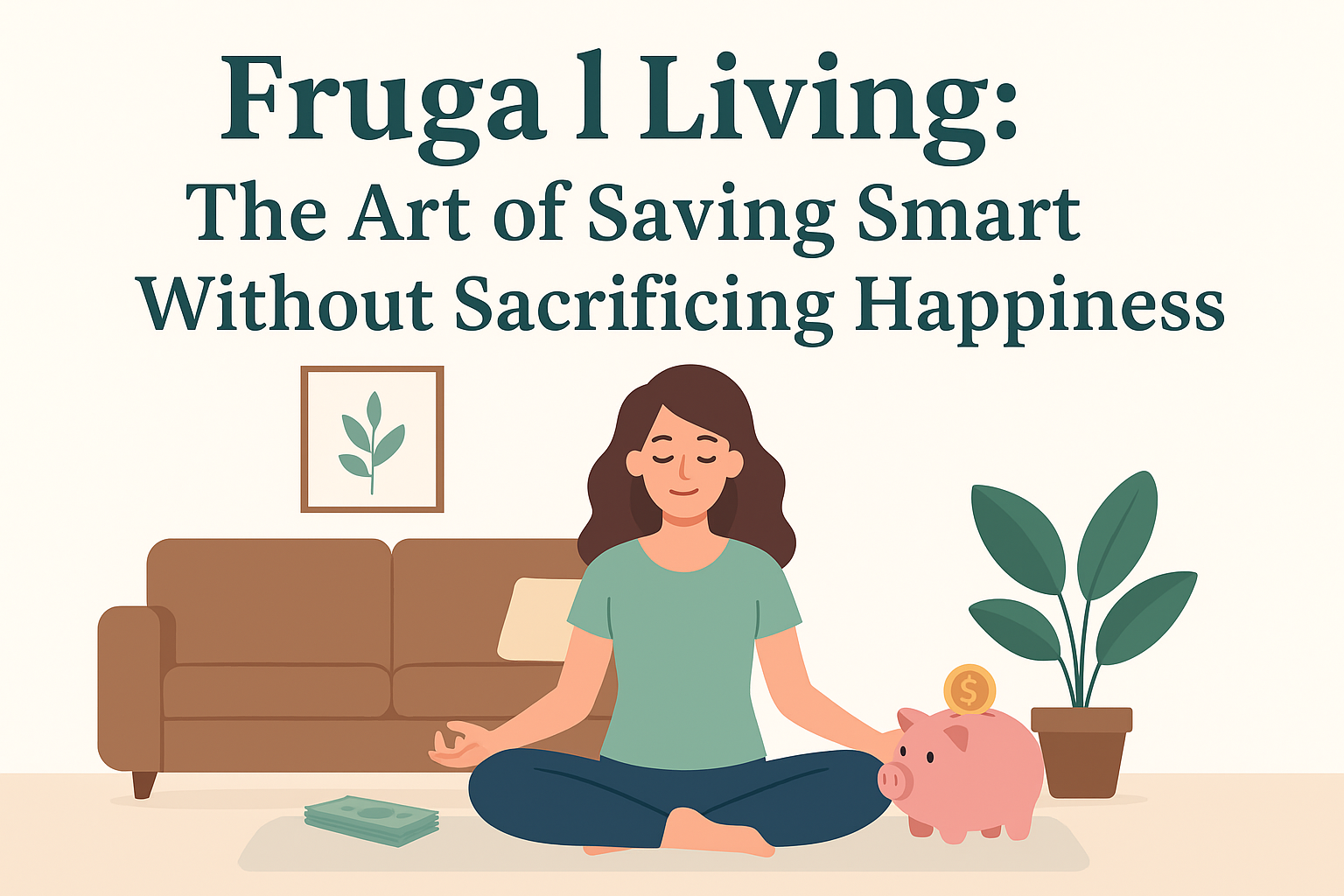Frugal Living: The Art of Saving Smart Without Sacrificing Happiness

🏡 The Art of Saving Smart Without Sacrificing Happiness
1. What Does Frugal Living Really Mean?
Frugality isn’t about living cheap — it’s about living smart. It’s the conscious decision to manage your money in a way that aligns with your values. Instead of mindless spending, frugal living is mindful spending.
- You don’t stop enjoying life.
- You simply stop wasting money on what doesn’t add value.
- You find creative ways to save without feeling deprived.
2. The Psychology Behind Frugal Living
Frugal living starts with mindset — understanding needs vs. wants.
Most people spend emotionally, not logically. Learning to differentiate between “desire” and “necessity” is the foundation.
Example:
You don’t need a new phone every year. You want it.
Recognizing this helps you build financial discipline over time.
3. Daily Habits of Frugal People
Frugal individuals share some common traits and daily routines:
- Meal Planning: They plan meals to avoid takeout expenses.
- DIY Mentality: From home repairs to gifts, they try doing things themselves.
- Couponing & Cashback: Every purchase is an opportunity to save.
- Minimalism: Owning fewer things reduces both clutter and costs.
- Energy Awareness: They unplug devices, use LED bulbs, and track usage.
💡 Small savings daily create massive results yearly.
4. Smart Grocery Shopping Techniques
Food expenses take up a big chunk of monthly budgets. To live frugally:
- Make a List Before Shopping: Avoid impulse buys.
- Buy in Bulk: For non-perishables, bulk saves a lot.
- Avoid Brand Loyalty: Store brands are often identical to name brands.
- Shop Seasonal: Fruits and vegetables are cheaper when in season.
- Don’t Shop Hungry: You’ll end up buying unnecessary snacks.
📊 Average frugal households save 25–40% on groceries using these strategies.
5. Energy & Utility Savings at Home
Frugal living is also eco-friendly living.
- Switch to LED lights.
- Seal windows and doors to prevent energy leaks.
- Use cold water for laundry.
- Unplug unused electronics.
- Set thermostats smartly.
💰 A 10% drop in energy use = hundreds of dollars saved annually.
6. DIY and Upcycling Lifestyle
Instead of buying new, frugal people reuse and repurpose.
- Turn old clothes into cleaning rags.
- Repaint old furniture instead of replacing it.
- Reuse jars, bottles, and packaging.
- Learn basic sewing or repair skills.
🌿 Being frugal often means being sustainable.
7. Transportation and Commuting Savings
Cars are money pits — gas, insurance, repairs. Frugal living encourages:
- Carpooling or public transport.
- Biking or walking short distances.
- Regular maintenance to avoid costly repairs.
- Insurance shopping once a year for better rates.
🚗 Frugal drivers save up to $2000 yearly.
8. Frugal Entertainment
Living frugally doesn’t mean no fun. It means fun without financial regret.
- Game nights instead of going out.
- Local free events, museums, and concerts.
- Library memberships for free books and movies.
- Hiking, picnics, or volunteering.
❤️ Memories > Money.
9. Minimalism and Decluttering
Minimalism and frugality are twin philosophies.
Owning less means spending less and stressing less.
- Sell unused items (online marketplaces).
- Avoid “just-in-case” purchases.
- Value experiences over possessions.
🧘 Minimalism frees both your space and your finances.
10. Long-Term Frugal Mindset
Frugality becomes a lifestyle when it’s sustainable.
- Review your expenses monthly.
- Set savings goals and track progress.
- Celebrate milestones (without spending).
- Teach frugality to kids early.
🏆 The goal isn’t to be cheap — it’s to be financially free.
✅ Conclusion: Frugality Is Freedom
Living frugally doesn’t mean living less — it means living intentionally.
You gain control, peace, and purpose with every dollar saved.
“Frugality is not about having less. It’s about making room for more — more joy, more time, and more freedom.”




